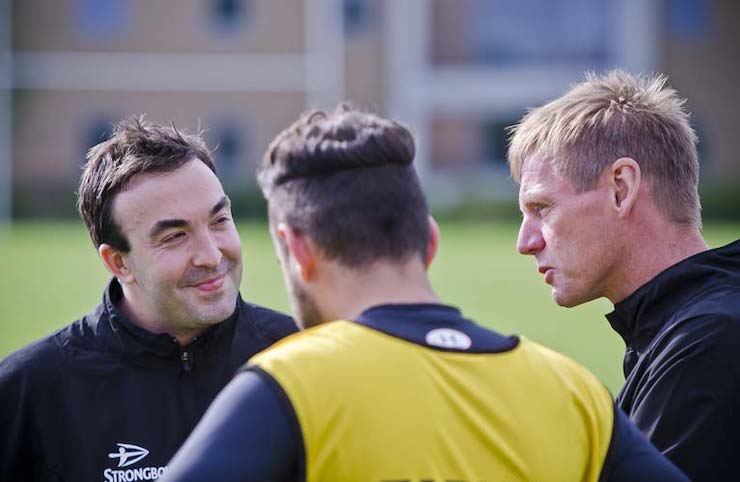Practice Should Reflect The Chaotic State of the Game
Want to get ahead and really help your soccer career reach the next level? Read Dan Abrahams columns on SoccerToday.
A global sports psychologist and author specializing in soccer, Dan Abrahams is based in England and works with professional soccer players in the English Premier League (EPL). Abrahams has helped hundreds of soccer players – many who play in the English Premier League (EPL). From working with players at Crystal Palace to QPR, Fulham, and West Ham among others, Abrahams makes a huge difference. Abrahams has authored several books and has a Soccer Academy as well.
“Learn to think, train and play like the best soccer players
in the world, from the man who works with them.”
Here is SoccerToday’s columnist Abrahams on how consistency is the key to success.

Soccer Coaches and Players: Is the Game Messy? Yes. Then Practice Should be Messy too.
I’m lucky. I’m fortunate. Over the past fifteen years, I’ve had the pleasure of standing by the side of English Premier League (EPL) training pitches watching elite players practice and hone their skills.
What impacts a player’s performance? Your feelings of confidence and your feelings of energy.
I’ve seen Rondos,
I’ve seen practice game won and lost … I’ve seen players support each other and blame each other. I’ve seen terrible arguments and incredible team camaraderie.

What I’ve also noticed is that quite often it looks messy! It looks chaotic! Mess and chaos!
The truth about good coaching activities is that they’re not always neat and tidy. They’re often chaotic. They’re often messy.
And that’s what you probably want it to look like a lot of the time. Because that’s how the game feels. When players take to the pitch, chaos hits their retina.
- Not order!
- Not similarity!
- Mess and chaos.
And games never follow a similar pattern. The opposition shift and switch tactics. The opposition finds alternative solutions. Teammates make mistakes and the views change.
Positive thoughts morph into negative ones, and feelings alter as the game unfolds.
But it’s enticing, isn’t
It’s enticing to make your activities look attractive. There’s an urge in every coach to keep things looking pretty … keep things looking orderly. It feels good. When it works…when players are getting it … when players are executing optimally … that sends a soaring feeling of certainty through your body as a coach
You know there’s a phenomenon called the fluency effect.

It’s this: players engage in an activity for 3 minutes. After a couple of minutes, they get used to the cues, clues and triggers that emanate from their teammates. So they start getting good at the activity.
And you’re thinking as a coach “Hey this is really good. I’m coaching them well. They’re gaining confidence.”
But they’re possibly not. They’re just experiencing the fluency effect…
The players are getting better without really getting better.
They’re practicing in an environment that doesn’t represent the messiness of the real game.
The game is chaotic, so do things during your training that help players experience chaos.
Add more variability … don’t go from one activity to the nex.
Don’t let the player’s practice be fluid. Break away from your first activity two reps in and start your second activity. Then return to the first.

Do an activity then ask your players to brainstorm ideas to make it tougher.
Ask them to do this during a water break. Throw a few curveballs in yourself. Make the space narrower … change the teams … make the rules tougher … manipulate tasks … gamify for certain individuals.
Add the element of consequences. Not ten press-ups for the losers, or running around the field but maybe a little social embarrassment (anyone for singing a song?)
Be brave. If the players look poor, who cares?
That’s what it feels like in a match, so that is what they’ll do. Players making mistakes. Who cares? T
Be brave, be brave, be brave…
Read: DAN ABRAHAMS ON THE IMPORTANT OF SOCCER PLAYERS BEING CONSISTENT







